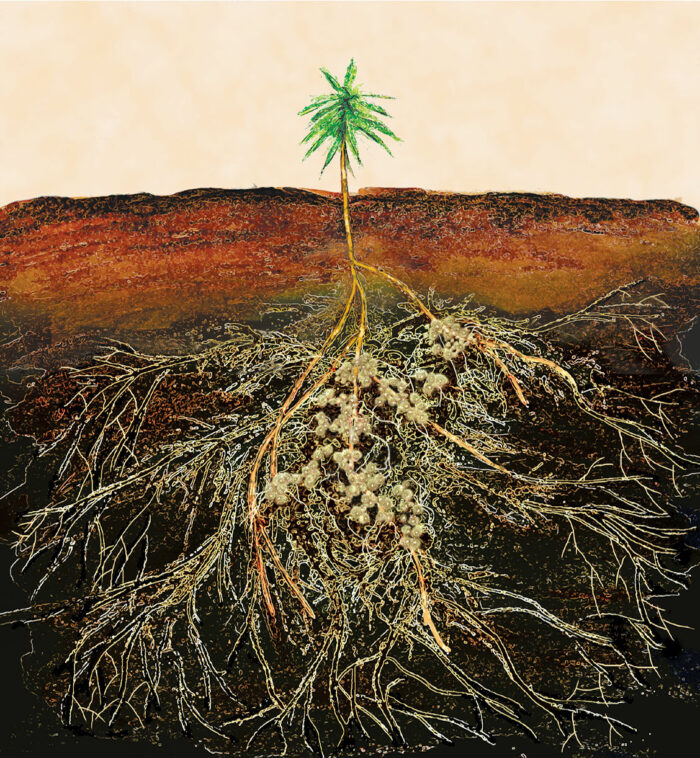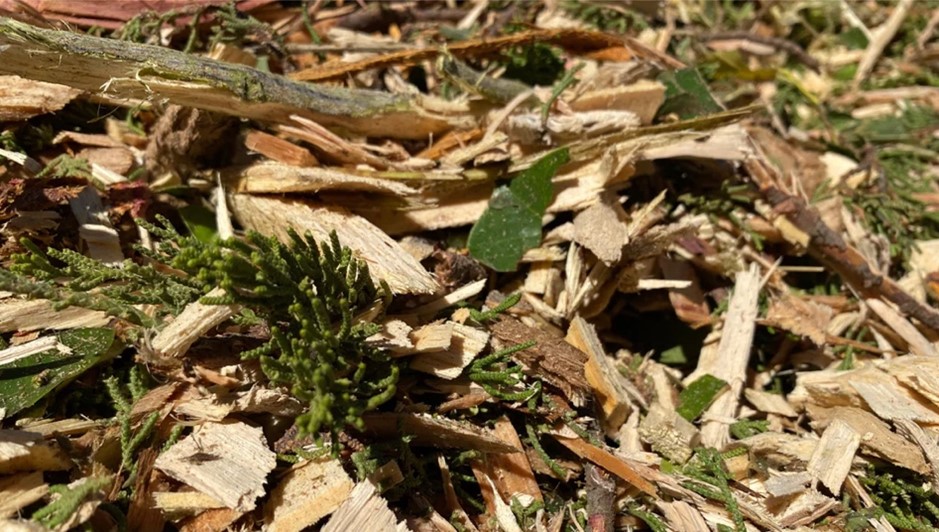Mycorrhizae — Worth the Investment?
- 2022-07-08
- By mkirk
- Posted in Horticulture, The Garden Buzz
By Judy Kunz, Colorado Master Gardener
In recent years there has been a wide range of soil improvement additives or inoculants making their way to garden center shelves. Some of these products advertise that they will help get the most out of our gardens through the addition of beneficial microbes.
Among the popular products are those that contain mycorrhizae (pronounced mai-kuh-rai-zay), a fungus that develops in the soil from spores that attach themselves to the roots of plants. Healthy soils contain great amounts of mycorrhizal spores in the organic matter near the soil surface, germinating in soil that contains adequate water and oxygen. Spores can also be found in abundance in forests under leaf litter and fallen trees and populating tree roots.

This fungus has a symbiotic relationship with plants. Plants transfer sugars produced in the leaves to feed it. It can colonize both the surface of roots (ectomycorrhizae) and sometimes even penetrate the roots themselves (endomycorrhizae), thereby enhancing a plant’s uptake of minerals and water. Mycorrhizae also help protect plants against toxins, root diseases, pests and drought stress.
In recent studies, however, the addition of commercial mycorrhizae to garden soil has been found to be ineffective and unnecessary. In controlled studies, when mycorrhizae products were added to the soil, follow up results found no trace of the actual mycorrhizal species that was introduced.
Healthy soils naturally contain native mycorrhizae, and adding purchased inoculants may not produce the desired results. Plants easily become colonized by native species. Beneficial microbes are important components of soils and the best way to cultivate their presence is through sound horticultural practices. As a result, it is more effective to focus on building healthy soil which, in turn, will promote colonization by native mycorrhizae.
Activities and products that may negatively affect beneficial mycorrhizae population:
- Unnecessary or excessive application of phosphate fertilizers, including composted manure containing high phosphate levels
- Broad spectrum bactericides
- Excessive digging and rototilling that destroy the natural network of beneficial microbes
- Overwatering
- Foot traffic that causes soil compaction and decreases oxygen levels
Activities promoting robust mycorrhizae growth:

- Herbaceous and woody plant diversity, including ground covers that can serve as mulch that retains soil moisture
- Compost added as a topdressing. Organic matter applied to the top of the soil will be carried down into the soil profile through water movement.
- Mulching with high grade arborist wood chips that contain both green and woody material.
For further reading about mycorrhizae, see A Gardener’s Primer to Mycorrhizae: Understanding How They Work and Learning How to Protect Them by Linda Chalker-Scott, PhD.
Horticulture Resources
- Garden Buzz Archives
- CSU Extension Resources
- Colorado Master Gardener Program
- Foothills to Plains Native Plant Master Program
- Native Bee Watch Community Science Program
- The Co-Hort Blog
- PlantTalk Colorado
- Soil Testing
- Plant Select
- Emerald Ash Borer
- Japanese Beetle
- Colorado State Forest Service
- Ask an Expert


